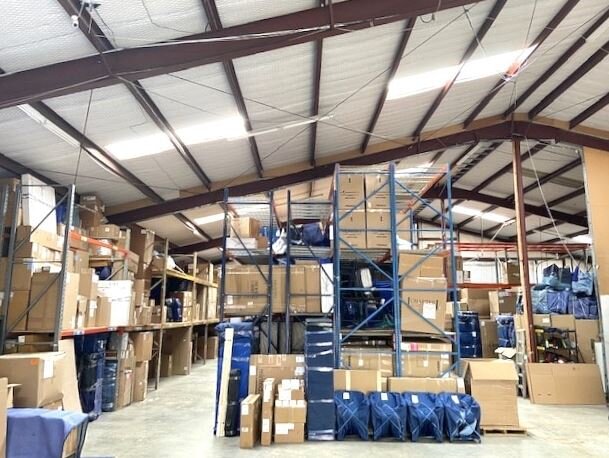In the world of interior design, where precision, creativity, and attention to detail reign supreme, logistics plays a vital role. Designers need their carefully chosen furniture, artwork, and décor to arrive on time and in perfect condition, ready to bring their vision to life. This is where an Interior Design Receiving Warehouse steps in, offering unparalleled support to simplify logistics and ensure flawless execution.
From streamlining deliveries to coordinating seamless installations, receiving warehouses are essential partners for interior designers. In this article, we explore the pivotal role of these warehouses, their benefits, and how they can elevate your design projects.
The Role of Receiving Warehouses in Interior Design Logistics
An Interior Design Receiving Warehouse serves as the backbone of design logistics, bridging the gap between suppliers and clients.
Key Functions of a Receiving Warehouse
- Centralized Receiving:
- Warehouses receive shipments from multiple vendors, consolidating them into one location.
- This eliminates the need for designers to coordinate individual deliveries.
- Inspection and Quality Control:
- Items are thoroughly inspected upon arrival to check for damages or defects.
- Issues are documented and communicated promptly to resolve problems before installation.
- Secure Storage:
- Warehouses provide safe and organized storage solutions, protecting high-value items until they are needed.
- Delivery Coordination:
- Warehouses manage the scheduling and transportation of items, ensuring they arrive at the project site on time.
Example: A designer managing a luxury home project used a receiving warehouse to coordinate deliveries from 12 vendors. The warehouse consolidated and inspected all items, ensuring they were ready for installation without delay.
Streamlining Deliveries from Multiple Vendors
One of the biggest challenges interior designers face is managing deliveries from multiple vendors, each with their own timelines and procedures.
How Receiving Warehouses Simplify Delivery Management
- Consolidation of Shipments:
- Vendors deliver items directly to the warehouse, where they are consolidated for streamlined logistics.
- This reduces the chaos of multiple deliveries arriving at the project site on different days.
- Scheduling Expertise:
- Warehouses coordinate with vendors to ensure items arrive when expected, preventing delays or surprises.
- Real-Time Updates:
- Advanced tracking systems provide designers with updates on the status of their shipments, offering peace of mind.
Example: A designer working on a boutique hotel relied on a receiving warehouse to consolidate deliveries from furniture and décor suppliers, ensuring all items were ready for simultaneous installation.
Secure Storage for High-Value Furniture and Décor
Design projects often involve high-value and delicate items, such as custom furniture, artwork, and rare décor. A receiving warehouse provides secure storage solutions to protect these pieces.
Features of Secure Storage
- Climate-Controlled Facilities:
- Warehouses maintain optimal temperature and humidity levels to prevent damage to sensitive materials.
- Advanced Security Measures:
- Surveillance systems and restricted access ensure items remain safe from theft or mishandling.
- Organized Inventory:
- Items are stored systematically, making retrieval easy and efficient when it’s time for delivery.
Example: A designer tasked with outfitting a desert villa used a receiving warehouse to store custom leather furniture and fragile glass sculptures in climate-controlled conditions, ensuring they arrived in pristine condition.
Handling Inspection and Quality Control of Items
Receiving warehouses play a crucial role in ensuring the quality and condition of items before they are delivered to the project site.
The Inspection Process
- Detailed Checks:
- Every item is inspected for damages, defects, or missing components.
- Photo documentation is provided for transparency and accountability.
- Proactive Problem Resolution:
- Any issues are communicated immediately, allowing designers to coordinate replacements or repairs with vendors.
- Peace of Mind:
- Designers can focus on their creative vision, knowing that the logistics are being handled professionally.
Example: A designer in charge of a luxury retail store’s remodel used a receiving warehouse to inspect all furniture and fixtures. The team identified and resolved a damaged display case issue before installation day, avoiding delays.
Coordinating Seamless Installations for Clients
The final installation phase is where everything comes together, and a receiving warehouse ensures this process runs smoothly.
How Warehouses Facilitate Installations
- White-Glove Delivery Services:
- Items are delivered, unpacked, and placed according to the designer’s specifications.
- On-Site Assembly:
- Professional teams handle furniture assembly and placement, ensuring precision and care.
- Flexible Scheduling:
- Warehouses coordinate deliveries to align with project timelines, accommodating last-minute changes or adjustments.
Example: A receiving warehouse provided white-glove delivery for a high-profile residential project, setting up custom furniture and lighting fixtures exactly as the designer envisioned. The polished result delighted the client and enhanced the designer’s reputation.
The Long-Term Benefits of Partnering with a Receiving Warehouse
Building a partnership with a reliable Interior Design Receiving Warehouse offers lasting benefits for designers:
- Enhanced Efficiency:
- By outsourcing logistics, designers save time and reduce stress, allowing them to focus on creativity.
- Improved Client Satisfaction:
- Professional handling, timely deliveries, and seamless installations leave a positive impression on clients.
- Support for Growth:
- As designers take on larger or more complex projects, a receiving warehouse scales its services to meet increasing demands.
Example: A designer who regularly partners with a receiving warehouse has been able to expand their business, taking on more projects without logistical bottlenecks.
Why Ocotillo Services is the Ideal Partner for Your Projects
For designers seeking a trusted Interior Design Receiving Warehouse, Ocotillo Services provides unmatched expertise and support.
What Sets Us Apart
- Comprehensive Services:
- From receiving and inspection to storage and white-glove delivery, we handle every aspect of logistics.
- Specialized Expertise:
- Our team is trained to manage high-value, fragile, and custom items with meticulous care.
- State-of-the-Art Facilities:
- Climate-controlled storage and advanced security measures ensure the safety of your items.
- Client-Centered Approach:
- We prioritize clear communication, reliability, and personalized service to meet your unique needs.
Conclusion
An Interior Design Receiving Warehouse is an indispensable partner for designers seeking to streamline logistics, protect high-value items, and deliver exceptional results for their clients. By consolidating deliveries, providing secure storage, and coordinating seamless installations, receiving warehouses elevate the design process and enhance client satisfaction.
Ocotillo Services is proud to support interior designers with tailored solutions that simplify logistics and ensure flawless execution. Partner with us to elevate your projects and deliver extraordinary experiences to your clients.

